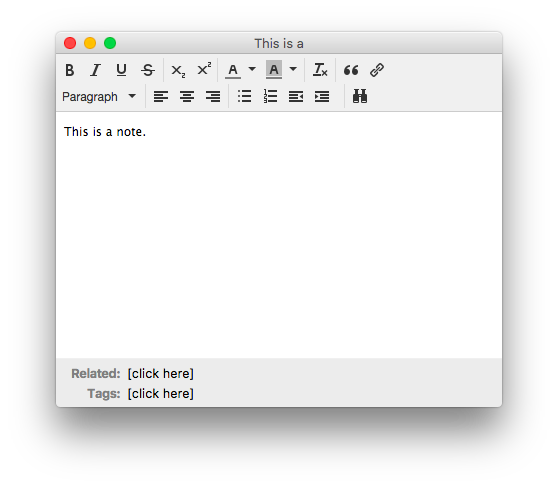Notes
In addition to items and file attachments, you can also store notes in your Zotero library: child notes, which belong to a specific item, and standalone notes. Notes are synced along with item metadata; they don't count against your Zotero file storage quota.
Child Notes

To create a child note, select an item in the center pane. Then, either click the “New Note” button at the top of the center pane ( ) and select “Add Child Note”, or go to the “Notes” tab in the right-hand pane and click the “Add” button. You can also right-click an item and select “Add Note”.
) and select “Add Child Note”, or go to the “Notes” tab in the right-hand pane and click the “Add” button. You can also right-click an item and select “Add Note”.
A note will be created as an attachment to the item (it will also show up under the “Notes” tab), and a note editor will appear in the right-hand pane. You can create a dedicated window for the note editor by clicking the “Edit in a separate window” button at the bottom of the editor. Text in notes is saved as you type.
Standalone Notes
Standalone notes work the same as child notes, but are not directly related to any item in your library. Standalone notes will appear alongside any other items in your library. To create a standalone note, click the “New Note” ( ) button and select “New Standalone Note”.
) button and select “New Standalone Note”.
Tagging and Relating
As with any other item in Zotero, notes can be tagged and related to other items. Both features can be accessed via the bottom of the note editor.
Searching Notes
Notes can be searched via the general Zotero search. You can search text within a note using the note editor's “Find and Replace” button or Ctrl/Cmd-F.
Images in Notes
You can embed images into Zotero notes by dragging them from your filesystem or, in some cases, by pasting them in. Embedded images sync between devices and count against your Zotero Storage quota.

 Upgrade Storage
Upgrade Storage